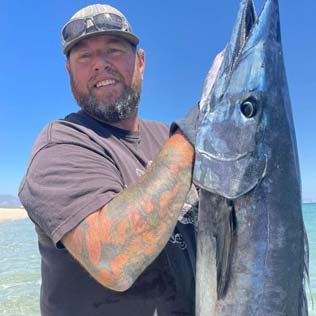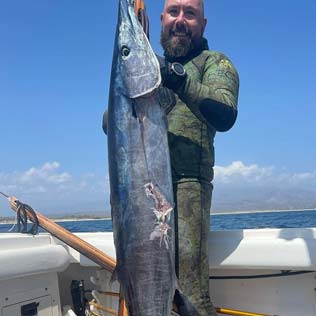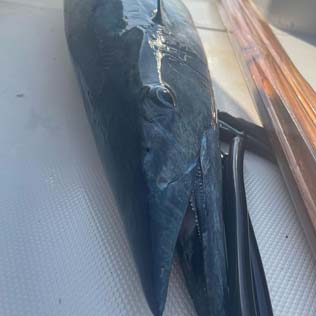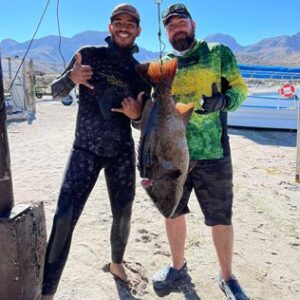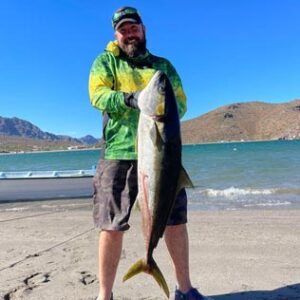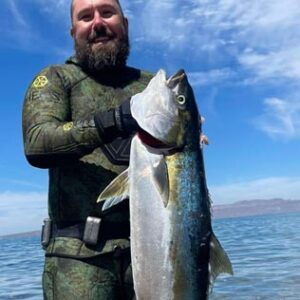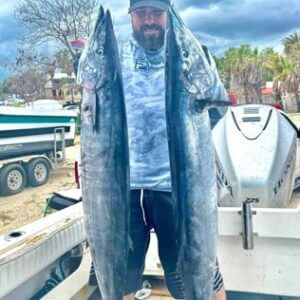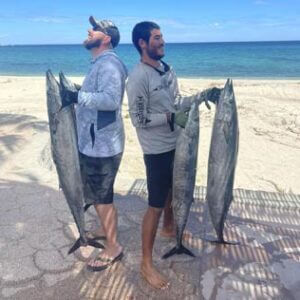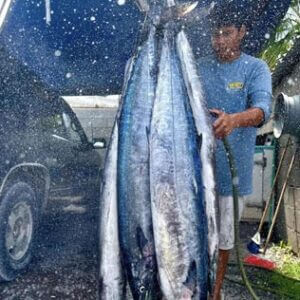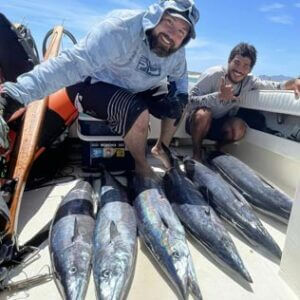Setup and hunting guide
Baja California, Mexico.
Our recommended setup for hunting Wahoo and other species in Baja
While every fish can be landed with any setup on a given day, we tend to prioritise different rigs for different species.
Speargun
Spearguns are a very personal choice. For Wahoo and many other species, we tend to lean towards a pretty heavy 140 wood gun with 3 x 14mm Primeline rubbers. This is quick to reload and offers plenty of range for the Wahoo that can often be coached in close for a relatively short-range shot. Matched with a 5/16 (8.1mm) spear, the recoil is minimised while still having plenty of penetration for the Wahoo’s soft flesh.
Slip-tip
The more astute of you reading this will note the Wahoo having soft flesh. For this reason, a slip-tip really is a must for these fast fish. A flopper or double flopper may well land your fish, but the damage done to the meat really does affect the amount of meat harvestable. It’s common to see up to 50% of the fish wasted due to flopper use, so please invest in a good slip tip, Moray slips are highly recommended if you can find one.
Float and float line
Aside from the slip tips, float selection is the next most important element to your gear selection. A heavy 35l float can have the same effect as using a flopper. With Wahoo, everything is about minimising stress on the fighting fish. We recommend going as light as you dare. The Riffe torpedo works well, as does the Rob Allen 11l Remora.
The idea is you want the fish to run and wear itself out before you pull it up. Manhandle it to the surface at your own peril. Wahoo tend to have 2 – 3 big runs then gas out, making for an easy retrieval and dispatch.
Float line is less important but avoid anything too heavy. A good 3 stretch bungee will help a poorly placed shot, as will some thinner Rob Allen heavy duty line that cuts through the water with ease.
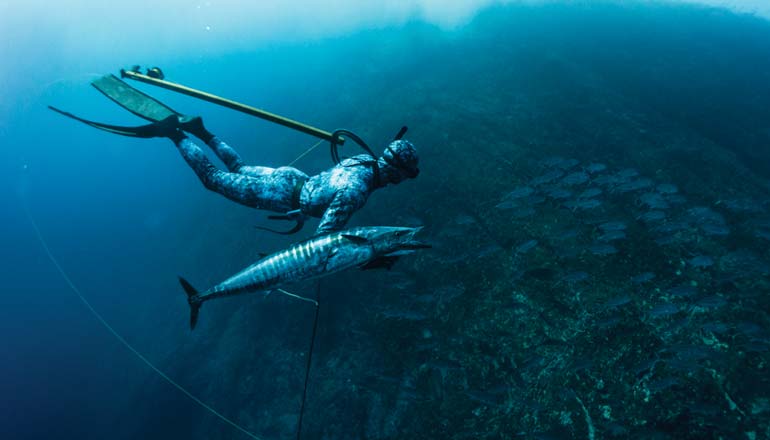
Interesting factoid.
Wahoo meat will often get tough and gelatinous if spined or stoned. The meat will turn from a bright white colour to an off-putting, pale yellow. This specifically happens when the fish fits and twitches rigorously when shot. While palatable when baked, it’s no good for sashimi. For this reason, we try and aim for just under the dorsal fin or tail which offers a thick side section or stronger stringy meat.
The downside to running a lighter spearfishing setup is that it doesn’t bode well for the unforeseen monsters that may appear. Here, we’re specifically referring to larger Marlin, heavy Amberjacks and the lesser spotted Yellowfin Tuna. These fish do show up on occasion and one of our guides had to painfully pass up a chance on a 600lb Blue Marlin that swam right passed him.
Like boats, everything is about compromise: there is no one solution which is optimal for all species. For this reason, we feel it’s best decide what you want to hunt and dedicate that hunt 100% to landing that fish. Once landed we can then change the setup and specifically target that next species.
As a good rule of thumb, you can attribute a 35l float for every 250lbs of fish, and maybe double that for dogtooth tuna.
When focusing on the larger Amberjacks and larger Billfish, we tend to use one 35l float. We want to keep the AJs off the reef and the Marlin tend to stay closer to the surface, reducing the demands on the float.
For large and powerful reef fish like Broomtail Grouper, we personally use the large floats and swap any bungees for a thick ski rope-style float line. We tend to set the length for as shallow as we can get away with. This helps minimise the fish running through a network of caves, and gives you something substantial to work with while fighting the fish off the bottom.
Shooting these fish is often the easy part. Dealing with the aftermath is where the real work begins and sorting out 20m of line that has wrapped around every part of the reef is an intimidating task, especially if it’s deep. Hunting these incredible fish is very much a team effort and safety has to be at the forefront of everyone’s mind. Repeated deep technical dives is not for the faint-hearted.
We never use reels and encourage our clients to do the same. Aside from making you near impossible to find in bad weather, we have seen many avoidable problems occur as a result of them. They seem to add an unnecessary level complexity with little rewarding benefits. However, it’s obviously down to each and every one of us to do our own personal risk assessments when entering the water to undertake this inherently dangerous sport.
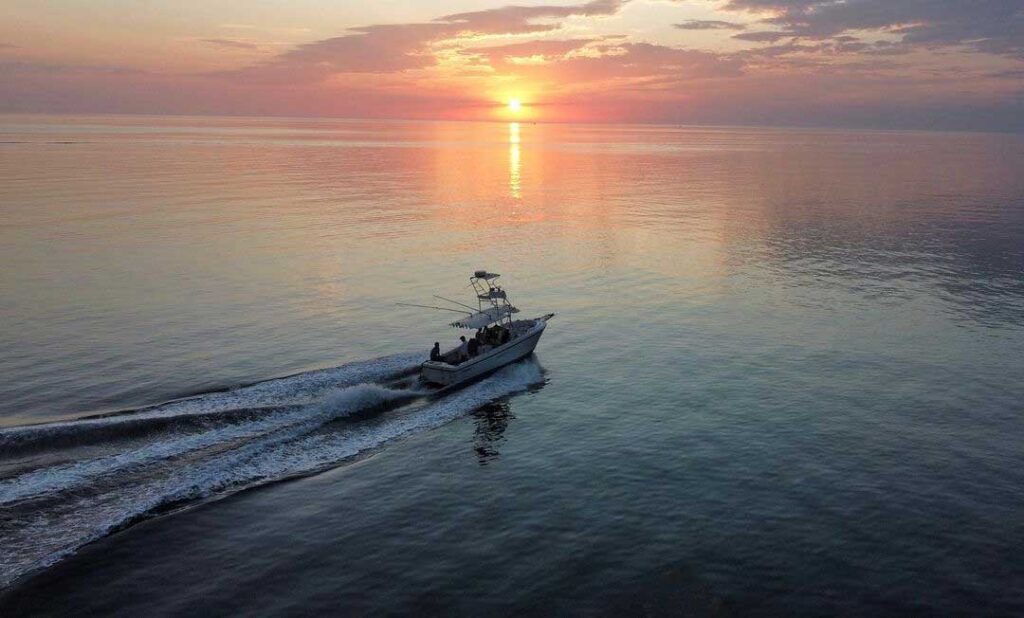
Hunting wahoo here really can be like living inside an episode of the Blue Planet. I personally have many memories of having Manta Rays (Mobula Munkiana) jumping 3 meters right behind me doing summersaults, hundreds of 15lb milkfish relaxing in front of me, a couple of ginormous Amberjacks cruising just out of reach along the sand ledge below and a patrol of Wahoo approaching from my side like fleet of U-Boats on an attack vector towards my flasher. Simply outstanding on so many levels.
If you want to target this magnificent fish of a lifetime, Baja is one of the only locations where we can come close to guaranteeing it. Baja, specifically where the warm and cold waters mix, is home to a mind-blowing amount of marlin.
More info on Spearfishing Baja
- Spearfishing Baja
- Baja FAQs
- Baja spearfishing equipment checklist
- What to do in Los Barriles, Baja
- Baja California, Mexico: Gallery
Get in touch to find out more: hello@spearfishing-charters.com
